
Activity Reports
Gathering Ogatsu Stones
September 12, 2011
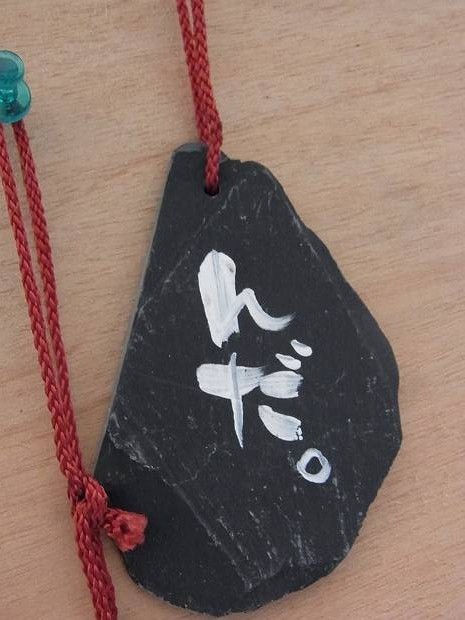
Today’s report is about stone-gathering in Ogatsu town, Ishinomaki. This doesn’t mean gathering stones that were washed up into sports fields and rice paddies, but actually introduces some unusual volunteer activities for industry revitalization in Ogatsu town.
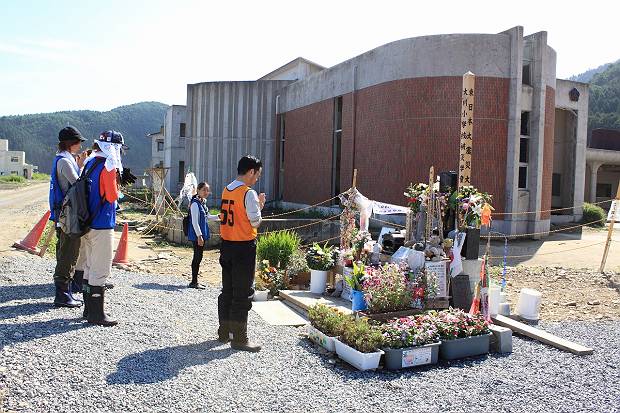
Ogatsu town is located near Ishinomaki, towards the Pacific Ocean. This photograph is of Ishinomaki Municipal Ookawa Elementary School, one of the places where search activities are still going on 5 and a half months after the disaster.
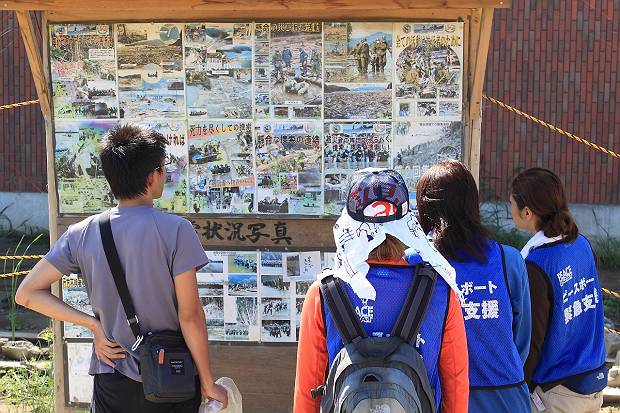
These volunteers were thinking about their reasons for volunteering – looked at the photographs, considering the horror of the disaster and the tsunami and what they can do to help.
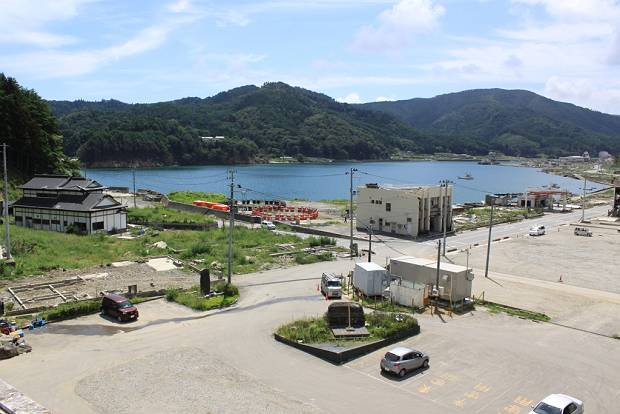
Another 15 minutes brings you to the center of Ogatsu town, surrounded by a peaceful bay. Here, fish farms flourished and people made their livelihoods through the fishing industry.
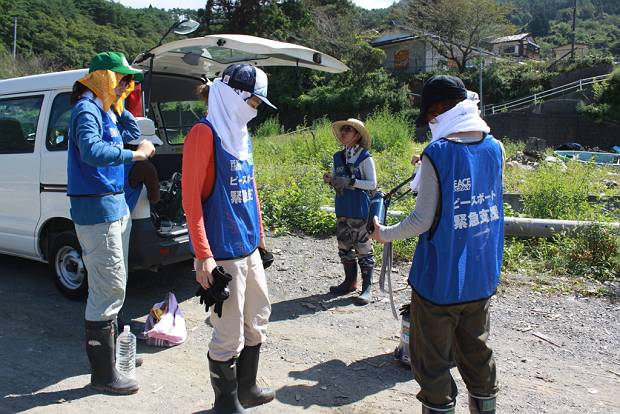
The volunteers begin to go over the work that they will be doing as soon as they arrive. Even though it’s the second half of August in Tohoku, it is still quite hot. Volunteers have to prepare against heat stroke, insect bites and make sure that they will be working in safe conditions prior to starting work.
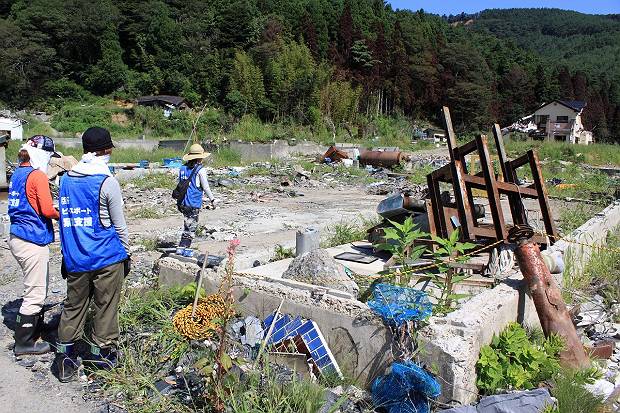
At first glance this looks like a kind of clearing but this is actually where the factory for washing Ogatsu stones stood. The ruins of the factory quietly tell of the destructive tsunami that swept through the area.
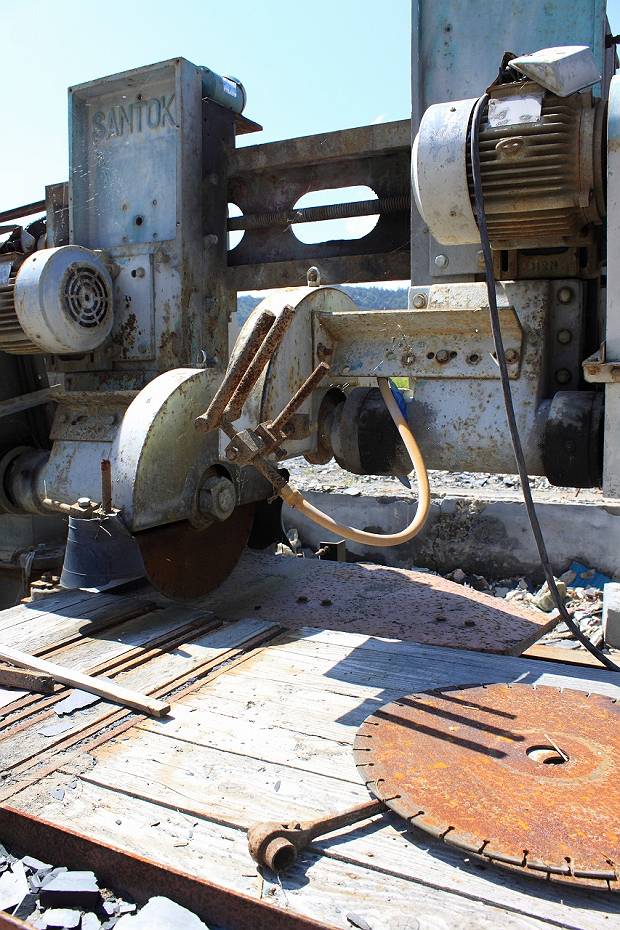
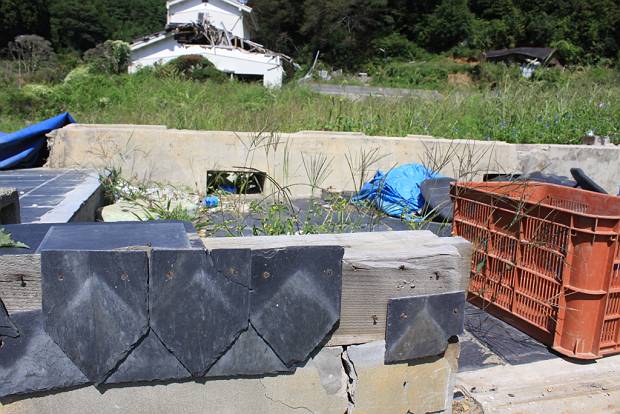
You can tell that there was a factory standing here before because of the stone-cutting machinery and Ogatsu stones likely to have been used for the factory’s walls that have been left behind.


Once the volunteers have confirmed what they are going to be doing they begin work.
The distinguishing feature of Ogatsu stones is that they are soft and break into thin slices. In other words, they can be easily processed. At the same time, they are extremely resilient against vertical pressure and it is said that this is the only place in Japan where they can be mined and manufactured into products. In Ogatsu town the processing of these stones into ink stones and other stone craft items is a traditional industry.
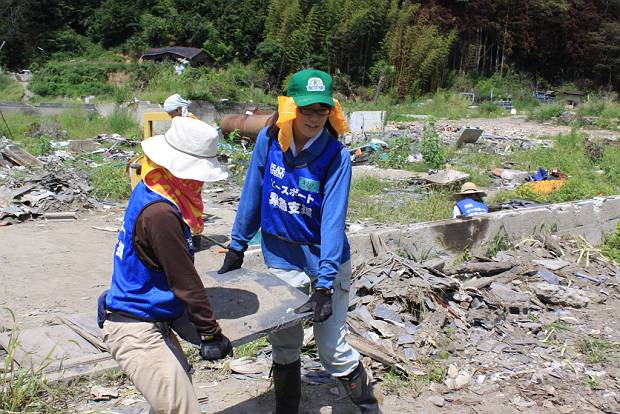
The majority of the Ogatsu stones at the factory were washed away in the tsunami. Many stones are left strewn around the factory but there are still many stones that are in usable condition scattered around. Some of the stones are so big that it takes two people to carry them.
The job of the Ogatsu stone-gathering volunteers is to collect these stones one by one.
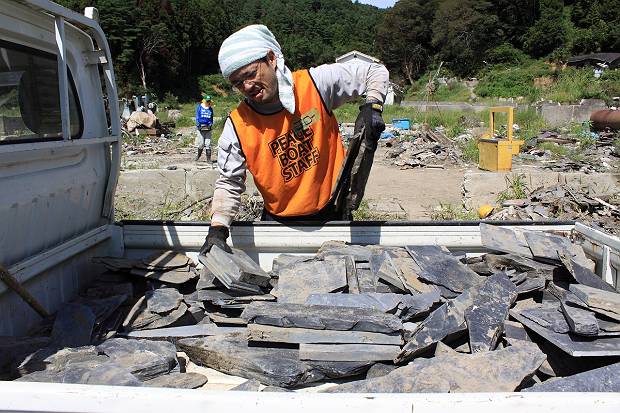
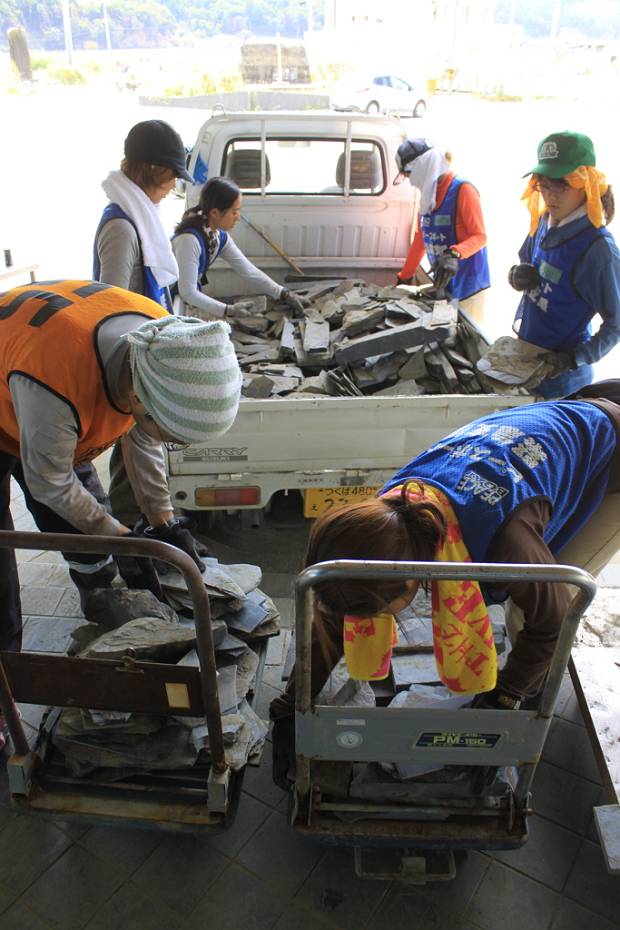
It doesn’t take long to fill the truck with Ogatsu stones.
The stones are then taken to the nearby Ogatsu town municipal offices. Apparently the tsunami reached the third floor of this building.
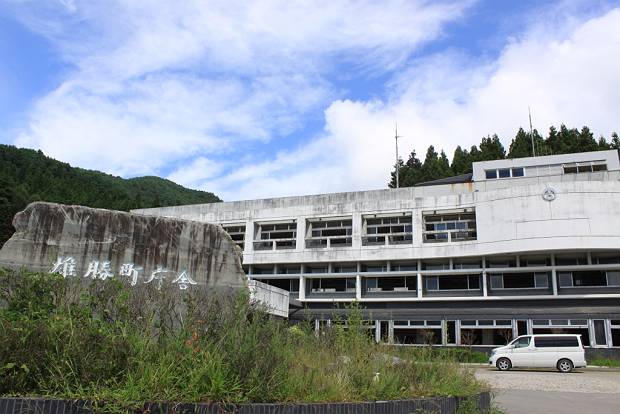
As you can see, in the collection area at the municipal offices there are many Ogatsu stones that have been collected. The volunteers have continuously put a lot of effort into collecting the stones.

From amongst the collected stones, the least-damaged stones are selected and then washed for re-processing.
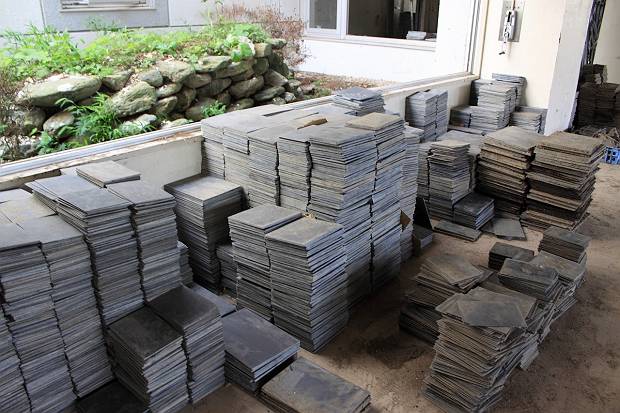
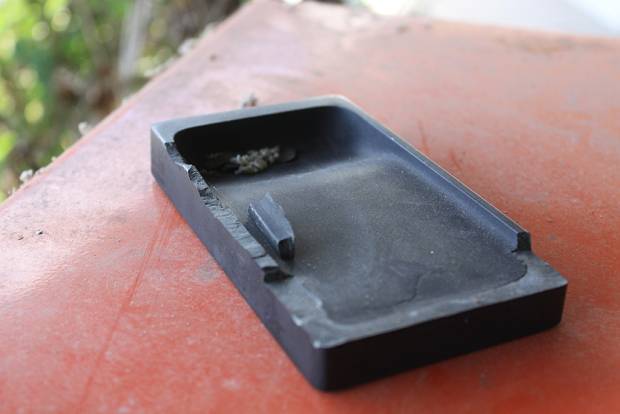
The Ogatsu stones will be made into ink stones like this one which was made before the disaster or be used for roof tiles and wall tiles of houses.
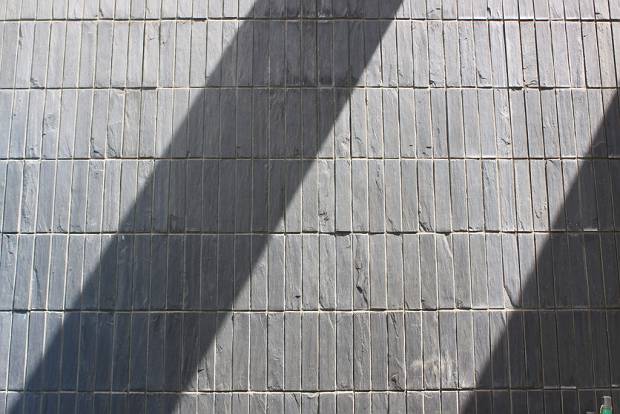
In fact, Ogatsu slate stones were used in the construction of the roof of Tokyo station. Before the disaster 30,000 stones were due for shipping but this has decreased greatly due to the effects of the tsunami. At present only 15,000 stones are going to be able to be shipped. In addition, the Ogatsu stone quarry is currently not operating and so the only source of Ogatsu stones are these Ogatsu stones which are being collected and reused.
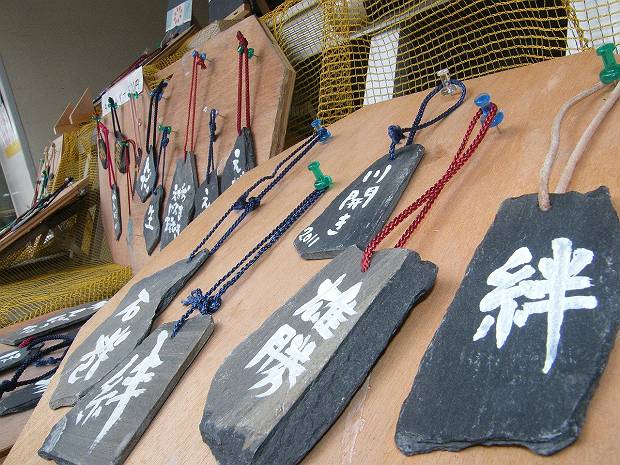
Ogatsu stone accessories are also being produced. The production of these accessories began for the Kawabiraki Festival. These stones are too small to use for tiles or ink stones, but with a bit of effort they can be made into key chains and necklaces.
The proceeds of sales are being donated towards the recommencement of fishing activities and fuel for ships in Funakoshi. It was Mr Nakazato, featured in the previously linked blog entry, who suggested the idea of gathering Ogatsu stones in the first place.
This day demonstrated the importance of the volunteer task of gathering stones.
Photos : Kataoka Kazushi
TAGS: debris removal • Disaster Relief • Earthquake • international volunteers • Ishinomaki • Japan • Kanto-Tohoku Earthquake and Tsunami • Ogatsu • Peace Boat • peaceboat • Relief • Tsunami • Volunteer • volunteering • Volunteers


